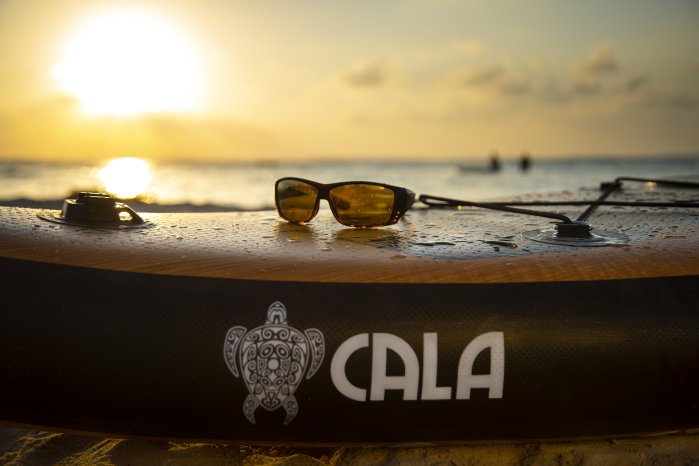What then are the most important criteria to consider when buying a SUP board that costs several hundred euros? Sebastian Grazzini, who is a much-travelled all-round sportsman and the brains behind the Mexican SUP brand CALA, which is conquering the European market this summer, knows.
He has six useful tips, especially for beginners, to keep in mind to make buying a SUP board a successful experience:
Tip 1: Look for quality
No doubt it takes some overcoming to spend several hundred euros on a piece of sports equipment with which someone has had little or no experience. To make sure that you and often family members and friends have fun with the board for a long time though, you simply have to go for better quality. In the unlikely event that you do regret making your purchase, however, a used board can be resold very easily.
Tip 2: Decide between pumping or hauling
Inflatable boards –or iSUPs for short – are very popular because they combine many practical features: They offer good control, require little storage space, and can be transported more easily than hard SUPs. A matching backpack for transport is often included in the delivery. They aren’t very susceptible to dents or scrapes but there are load limits, of course: A sharp stone could potentially tear a hole in the PVC skin and cause the board to sink. This isn’t a risk for a hard SUP that weighs more than an iSUP but doesn't need to be re-inflated before each use.
Tip 3: Consider the size
Boards come in different lengths, widths, and thicknesses. Beginners should use the following rule of thumb: The more voluminous the board, the better young and old can ride and have fun with it. The longer and thicker the board, the more weight it carries and thus the less manoeuvrable it is. A board’s width determines how stable it is on the water and how much balance is required to stay on it. The size ultimately also determines the board’s classification:
Fitness boards tend to be long and wide. All-round SUP boards strive for the compromise between manoeuvrable yet stable. Narrow, long boards are best for professionals because they can be fast but are rather unsteady to handle.
Tip 4: Don’t underestimate the paddle
Next to the board, the paddle plays the most important role: It should be buoyant in case it falls into deeper water. SUP paddles are usually made of aluminium, carbon, or fibreglass. The somewhat expensive but long-lasting and comparatively light carbon paddles are suitable for beginners and professionals alike. Grip handles fit better in small hands, and T-shaped paddles are suitable for large ones. The more surface area the paddle blade has, the faster yet also more strenuous the tour will be.
Tip 5: Buy proper clothing
Wearing suitable clothing and sun protection is important when stand-up paddling. Practical swim shirts are available that dry quickly and protect the skin from the sun. Clothing should cover the belly especially for beginners who still fall into the water frequently. This prevents you from scraping your skin on the edge of the board every time you pull yourself up onto it. A wetsuit isn’t necessary because you aren’t permanently in the water when stand-up paddling.
Tip 6: Self-fulfilment
This is the deciding factor when purchasing a SUP because it’s all about meeting your own individual needs, whether you want to go on a long river tour with friends, a meditative after-work trip on the lake, take a maritime excursion with the dog, or do yoga at sunrise. Just about anything is possible on the right board, and the experience is easy to enjoy once you hold the paddle firmly in your hand.



